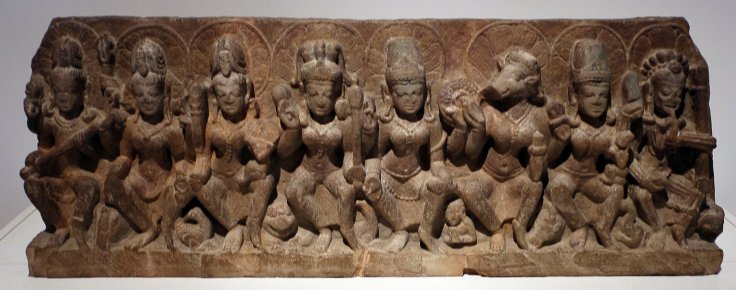Sanskrit, which means "refined", "consecrated" and "sanctified," is the classical language of ancient India and it became the liturgical language of Hinduism, Buddhism and Jainism. Recently archaeologists have discovered the earliest epigraphic evidence so far for the Saptamatrika cult in Southern India.
It should be mentioned that in Hinduism, Saptamatrika is a group of seven mother-goddesses, who are the wives of Hindu deities- Brahma, Shiva, Kumara, Vishnu, Varaha, Indra and Yama. However, as per the Epigraphy Branch of the Archaeological Survey of India, this newly found Sanskrit inscription is the earliest evidence to have been found in South India as on date.
The Sanskrit inscription

The ancient evidence was issued by Satavahana dynasty's last king Vijaya that dates back to 207 AD. As mentioned by the Director of Epigraphy branch, Archaeological Survey of India, Dr K Muniratnam, the Sanskrit inscription was unearthed in India's Chebrolu village in Guntur district of Andhra Pradesh earlier this month.
The local residents first found the inscription and informed the authorities. The villagers noticed a pillar with some engravings when they were restoring and repairing a local temple. Muniratnam told Indian news organisation The Hindu that the inscription was first copied and studied by a person named Kartika.
It records the construction of a temple and includes description of a few images on the southern side of the temple. As per Muniratnam, earlier references of Saptamatrika worship were noticed in Kadamba copper plates and the Chalukyas as well as Eastern Chalukya copper plates. But this new finding takes the archaeologists almost 200 years ago which also means that the inscription is earliest datable evidence from South India so far.

Another archaeological finding
From the same archaeological site another inscription, which was written in Prakrit language, was found. It should be mentioned that this inscription belongs to the 1st century AD and is the earliest evidence epigraphic reference to monastery said Dr Muniratnam. He also added that there are many ancient monuments and structures across the country which could contain a treasure trove of information but right now, all of these historic monuments or structures need protection.









